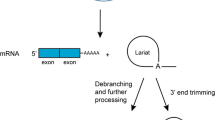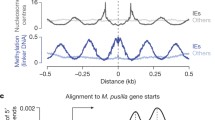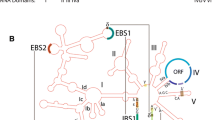Abstract
The discovery of RNA-based enzymatic activity by Thomas Cech’s and Sidney Altman’s laboratories was a momentous event that led Walter Gilbert to the concept of an “RNA world”—a primitive ancient stage of life that existed before the appearance of DNA and protein molecules. A year later, Gilbert formulated “the exon theory of genes,” which hypothesized that introns are very ancient genetic elements present at the earliest stages of life in the RNA world. This theory has been fiercely debated and still has vigorous supporters and opponents. In this communication, we explore peculiarities in the RNA-protein world and their effect on intron–exon structures. We demonstrate that these peculiarities, which exist in the absence of DNA, could shed light on introns’ original functions as well as the important role they might have played in the origin of life. For ancient DNA-lacking cells, a crucial problem existed in distinguishing two distinct subsets of RNAs: those messenger molecules coding for proteins and those heritable genetic molecules complementary to messenger RNAs that propagate the genetic information through generations. We propose that ancient introns could act as markers of RNA subsets, directing them to different functions.

Similar content being viewed by others
References
JM Coffin (1996) Retroviridae: The viruses and their replication BN Fields DM Knipe PM Howley (Eds) Fields virology Raven Press New York 1767–1847
RF Doolittle (1995) ArticleTitleThe origin and evolution of eukaryotic proteins Philos Trans R Soc Lond B Biol Sci 349 235–240
A Fedorov AF Merican W Gilbert (2002) ArticleTitleLarge-scale comparison of intron positions among animal, plant, and fungal genes Proc Natl Acad Sci USA 99 16128–16133
L Fedorova A Fedorov (2003) ArticleTitleIntrons in gene evolution Genetica 118 123–131 Occurrence Handle10.1023/A:1024145407467 Occurrence Handle1:CAS:528:DC%2BD3sXksFWnt7o%3D Occurrence Handle12868603
W Gilbert (1986) ArticleTitleOrigin of life, the RNA world Nature 319 618 Occurrence Handle10.1038/319618a0
W Gilbert (1987) ArticleTitleThe exon theory of genes Cold Spring Harbor Symp Quant Biol 52 901–905
S Gribaldo H Phillippe (2002) ArticleTitleAncient phylogenetic relationships Theor Popul Biol 61 391–408
H Hartman A Fedorov (2002) ArticleTitleThe origin of the eukaryotic cell: A genomic investigation Proc Natl Acad Sci USA 99 1420–1425
JM Logsdon SuffixJr A Stoltzfus WF Doolittle (1998) ArticleTitleMolecular evolution: Recent cases of spliceosomal intron gain? Curr Biol 8 R560–R563
M Long SJ deSouza W Gilbert (1995) ArticleTitleEvolution of exon-intron gene structure of eukaryotic genes Curr Opin Genet Dev 5 774–778
M Long M Deutsch W Wang E Betran FG Brunet J Zhang (2003) ArticleTitleOrigin of new genes: evidence from experimental and computational analyses Genetica 118 171–182
M Lynch AO Richardson (2002) ArticleTitleThe evolution of spliceosomal introns Curr Opin Genet Dev 12 701–710 Occurrence Handle10.1016/S0959-437X(02)00360-X Occurrence Handle1:CAS:528:DC%2BD38XosFOhs7o%3D Occurrence Handle12433585
F Martinez-Abarca N Toro (2000) ArticleTitleGroup II introns in the bacterial world Mol Microbiol 38 917–926
LM McNally MT McNally (1998) ArticleTitleAn RNA splicing enhancer-like sequence is a component of a splicing inhibitor element from Rous Sarcoma virus Mol Cell Biol 18 3103–3111
LE Orgel (2003) ArticleTitleSome consequences of the RNA world hypothesis Orig Life Evol Biosph 33 211–218 Occurrence Handle10.1023/A:1024616317965 Occurrence Handle1:CAS:528:DC%2BD3sXlt1yktL0%3D Occurrence Handle12967268
JD Palmer JM Logsdon (1991) ArticleTitleThe recent origin of introns Curr Opin Genet Dev 1 470–477
DM Prescott (1999) ArticleTitleThe evolutionary scrambling and developmental unscrambling of germline genes in hypotrichous ciliates Nucleic Acids Res 27 1243–1250
NJ Proudfoot A Furger MJ Dye (2002) ArticleTitleIntegrating mRNA processing with transcription Cell 108 501–512 Occurrence Handle10.1016/S0092-8674(02)00617-7 Occurrence Handle1:CAS:528:DC%2BD38XhvF2jsrk%3D Occurrence Handle11909521
IB Rogozin YI Wolf AV Sorokin BG Mirkin EV Koonin (2003) ArticleTitleRemarkable interkingdom conservation of intron positions and massive, lineage-specific intron loss and gain in eukaryotic evolution Curr Biol 13 1512–1517
DA Shub (1991) ArticleTitleThe antiquity of group I introns Curr Opin Genet Dev 1 478–484
ML Sogin (1991) ArticleTitleEarly evolution and the origin of eukaryotes Curr Opin Genet Dev 1 457–463
Acknowledgments
The authors would like to thank Drs. Walter Gilbert, Scott Roy, Hyman Hartman, and Joseph Shapiro for their critical discussion of the manuscript. Support for this work was provided by the Medical College of Ohio Foundation.
Author information
Authors and Affiliations
Additional information
Reviewing Editor: Dr. Manyuan Long




